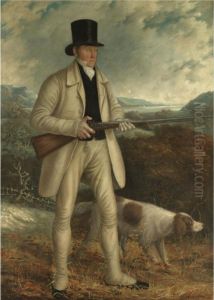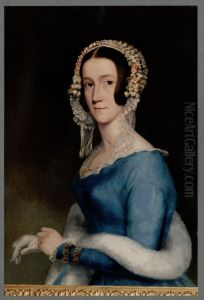Hugh Hughes Paintings
Hugh Hughes, born in 1790, was a significant figure in the early 19th century British art scene, albeit not as widely recognized today as some of his contemporaries. His life and work offer a fascinating glimpse into the period's artistic movements and the challenges and opportunities faced by artists in Britain during the Georgian and early Victorian eras. Hughes was a versatile artist, engaging in both painting and engraving, which allowed him to explore different aspects of the visual arts and contribute to the rich tapestry of British art history.
Hughes' early life was marked by a passion for the arts, and he received his education in London, where he was exposed to the burgeoning art scene of the time. The late 18th and early 19th centuries were a period of significant change and development in British art, with the foundation of the Royal Academy in 1768 by Sir Joshua Reynolds, among others, playing a crucial role in promoting the arts. Hughes was part of this vibrant community, and his work was influenced by the Romantic movement, which emphasized emotion and individualism, a departure from the classical restraint of the previous era.
Throughout his career, Hughes exhibited a keen interest in landscapes and portraiture, which were popular genres among British artists of the time. His landscapes, in particular, reflect the Romantic movement's fascination with nature, imbued with a sense of emotion and sublime beauty. Hughes' ability to capture the dynamic and changing moods of the British landscape earned him a modest but dedicated following. He exhibited his work at various prominent venues, including the Royal Academy, though he never became a member.
Hughes was also known for his engravings, a craft that allowed him to reproduce and disseminate his and others' works to a broader audience. This aspect of his career highlights the growing importance of printmaking in the 19th century, both as an art form and as a means of communication. Through his engravings, Hughes contributed to the popularization of art, making it accessible to the burgeoning middle class and thus playing a part in the democratization of art consumption during the period.
Despite his contributions to the British art scene, Hughes' name is not as prominent in the annals of art history as some of his peers. His death in 1863 marked the end of a career that, while not groundbreaking, was nonetheless reflective of the artistic trends and social changes of his time. Today, Hughes' work is appreciated by art historians and collectors who recognize the value of his landscapes and engravings in providing insight into the cultural and aesthetic shifts of early 19th century Britain.

